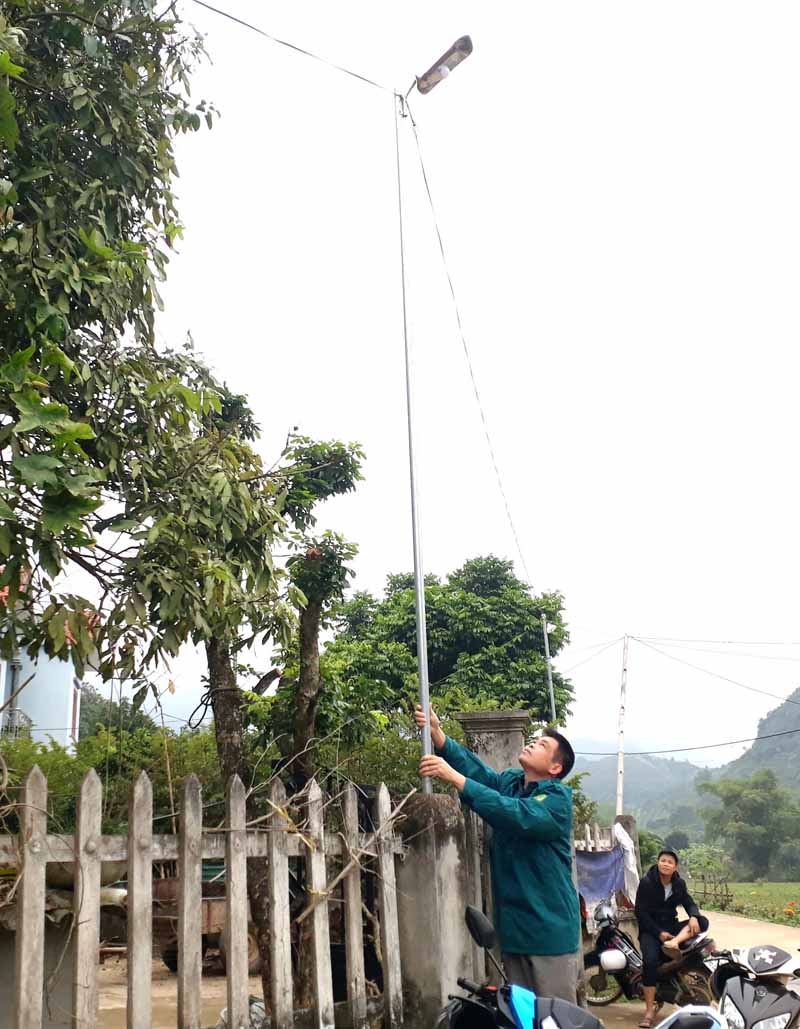



People are checking the power line works
lighting the countryside.
There are 106 households in the hamlet. These
households are divided into 4 residential areas with over 90% of Muong ethnic
people. In 2018, with the effort of overcoming difficulties and the solidarity,
people in Khang 3 hamlet have achieved certain success in the construction of
new countryside.
In the past, when lighting was not installed,
the traveling in the evening had many inconveniences. There was the risk of the
traffic insecurity along with the potential of losing security. By the middle
of 2018, in the hamlet's meeting, the village proposed the idea of building a
lighting line on the roads and receiving enthusiastic support from the people.
After discussing and agreeing, the households contributed money and workdays to
install the project with a total construction cost of more than 20 million
VND. After more than seven months of
using, the project has brought into full and practical effect. The people are
very excited.
From the reality, it can be seen that the
electricity lighting project of Khang 3 hamlet is built firmly and solidly with
zinc pillars. To facilitate the management as well as repairing and
maintenance, the hamlet has installed a common electric meter for the whole
route, located in the neighborhood culture house. Every month, people
contribute the electricity cost. Additionally, the village management board
also collects 1,000 VND per household. This amount is used as an estimated
budget to repair the building when incidents occur as well as to install
additional lines to all households. Spending a small amount of money but it
brings great effectiveness to the people in Khang 3 hamlet. People are all
excited and proud of the constructions which were built by 100% money they
contributed. "The construction of electric lighting in the village roads
is very practical, not only convenient for living and traveling but also for
the security. Because it is near the National Road 6, at night there was often
theft and robbery in the neighborhood in the past. Now there is lighting power
to all residential areas, this situation is much limited.” said Ms. Thanh, a
resident in Khang 3 hamlet.